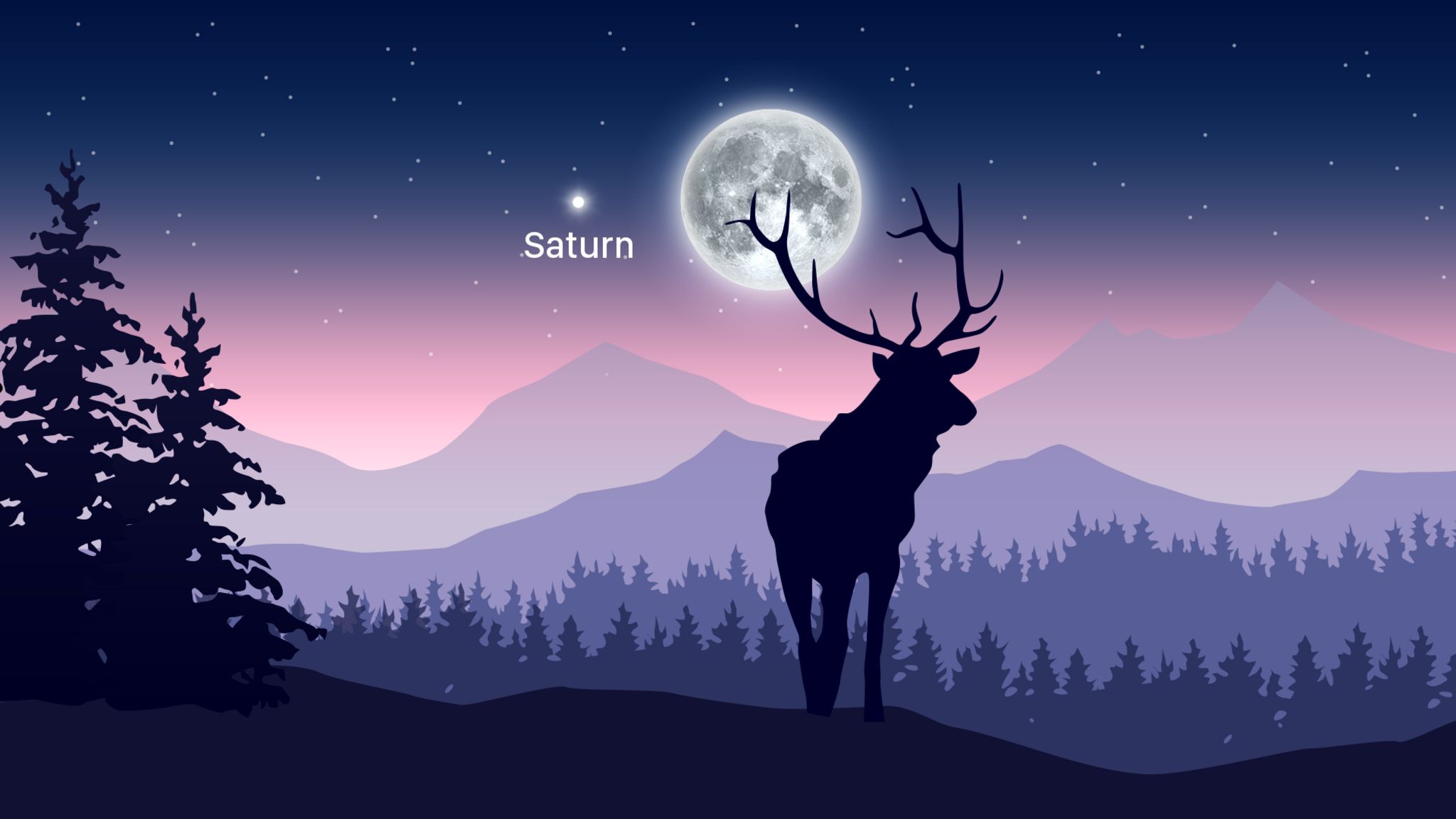The Full Buck Moon
This week, a big, bright moon will dominate evening skies all over the world – perfect for reminding us to celebrate humankind’s first steps upon it 50 years ago this Saturday, July 20 when Apollo 11 landed on the Moon.
When the bright, nearly full moon rises over the horizon on Monday evening, the medium-bright, yellowish planet Saturn will be near. The pair will cross the sky together during the night and will easily fit within the field of view of your binoculars. After Tuesday, the Moon will wane in phase and rise later – passing through the stars of Capricornus and then Aquarius on the coming weekend.
The July full moon will happen on Tuesday. It is called the Buck Moon after the new antlers that are in full growth mode around this time of the year. Also known as the Thunder Moon, or Hay Moon, this one always shines in or near the stars of Sagittarius or Capricornus.
When the moon approaches its full phase, all of the regions where the Apollo astronauts explored are illuminated by sunlight. Each of the six crewed Apollo Missions was sent to a different region of the moon in order to carry out experiments and to bring back rock samples that help us determine the age and composition of the moon’s surface. For safety reasons, Apollo 11 was sent to the flat and relatively featureless terrain of "Sea of Tranquility". Later missions landed in more rugged regions with complex geology.
This full moon will also feature a partial lunar eclipse. The entire eclipse will be visible from most of Europe and Africa, the Middle East, and western India. South America will see the later stages of the eclipse after moonrise, and Australia and Southeast Asia will see the eclipse set in progress. None of the eclipse will be visible from North America.
According to your location our Eclipse Guide app will keep you completely up to date with the stages of the eclipse and the best time for observing. With our Moon Walk app you also can step into the legendary astronaut's boots and repeat the glory of lunar exploration.
Keep looking up and enjoy the beauty of the Moon!
